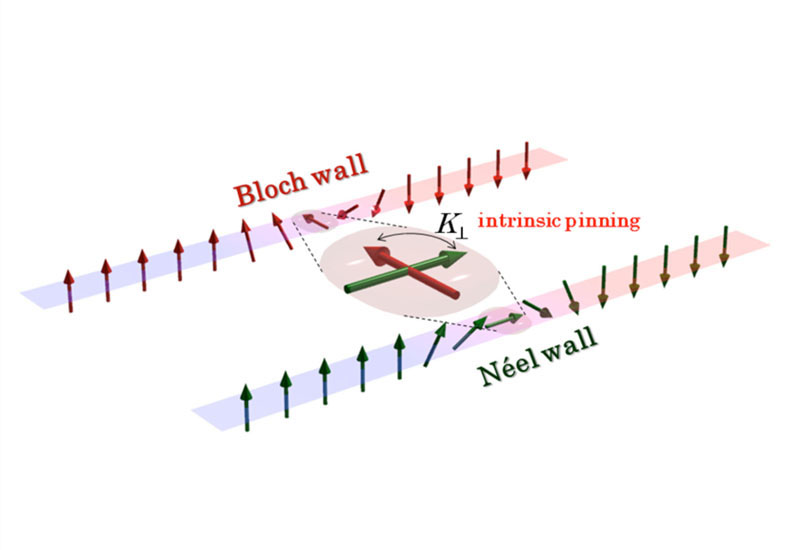Professor ONO, Teruo and his research group “Observation of the intrinsic pinning of a magnetic domain wall in a ferromagnetic nano-wire” (Published in “Nature Materials,” 20 February 2011)
|
“Observation of the intrinsic pinning of a magnetic domain wall in a ferromagnetic nano-wire”
Published in ” Nature Materials” , 20 February 2011 |

Prof. ONO T, Assoc Prof. KOBAYASHI K, |
| T. Koyama1, D. Chiba1,2, K. Ueda1, K. Kondo1, H. Tanigawa3, S. Fukami3, T. Suzuki3, N. Ohshima3, N. Ishiwata3, Y. Nakatani4, K. Kobayashi1, T. Ono1 | |
| 1Institute for Chemical Research, Kyoto University, Gokasho, Uji, Kyoto 611-0011, Japan. 2PRESTO, Japan Science and Technology Agency, 4-1-8 Honcho Kawaguchi, Saitama 322-0012, Japan. 3NEC Corporation, 1120 Shimokuzawa, Chuo-ku, Sagamihara, Kanagawa 229-1198, Japan. 4University of Electro-communications, Chofu, Tokyo 182-8585, Japan |
|
|
Displacing the domain wall (DW) is one of the most promising methods to switch the local magnetization. Using the reaction of spin torque is a promising method for electrically doing so. The adiabatic spin torque, which is exerted by transferring the change of the spin angular momentum of carrier electrons to local spins, is the most ubiquitous scenario. This torque moves a DW by changing its structure periodically between a Bloch wall and Néel wall. The energy barrier to be overcome to change the domain wall structure is called intrinsic pinning, which determines the threshold current density, Jth, for the DW displacement (see Figure). This scenario, however, is not applicable in the most intensively investigated NiFe nano-wires with in-plane magnetization, because Jth in this system is two orders smaller than theoretical expectation as well as depends on the extrinsic pinning strength brought by inevitable edge/surface roughnesses, defects, or intentional notches in artificial wires. In contrast, for the adiabatic spin torque, which is theoretically well established, no experimental evidence that the intrinsic pinning dominates Jth has been reported, although comparisons between the theories and experiments have been attempted. |
|
|
We demonstrate by using Co/Ni nano-wires with perpendicular magnetization that Jth is tunable by varying the wire width, thus by controlling the strength of the intrinsic pinning. Jth shows a minimum value at the critical width where the DW energies of Bloch wall and Néel walls are equivalent. Insensitivity of Jth to the external magnetic field is also shown. These results do not only prove that Jth in Co/Ni nano-wires is dominated by the intrinsic pinning but also shed light on the pivotal physics of the spin torque and its advantage in reliable device application. |
|
| Figure Intrinsic pinning of magnetic domain wall and device structure. Schematic of the Bloch and Néel domain walls (DW). A current flowing in the wire exerts the spin transfer torque on the local spins inside the DW and rotates them in the sample plane, resulting in the periodic change of the DW structure between Bloch and Néel walls. K⊥ is the energy density of magnetic anisotropy associated with the rotation of the DW spins, which determines the intrinsic pinning for the current-induced DW motion. |
|
 Institute for Chemical Research, Kyoto University
Institute for Chemical Research, Kyoto University International Joint Usage Research Center
International Joint Usage Research Center